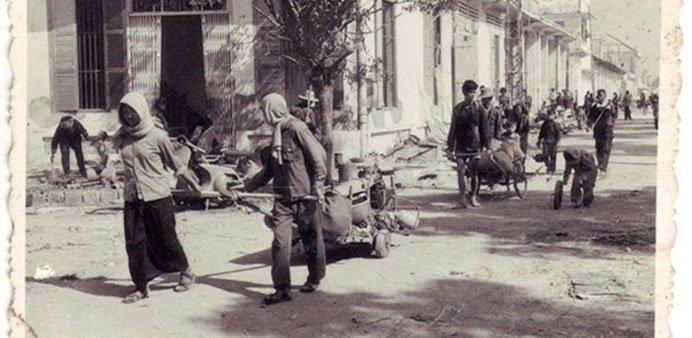DPA/Phnom Penh
It’s early Sunday morning in Phnom Penh, and Youk Chhang is giving a tour of a historic stretch of Norodom Boulevard now home to embassies and office buildings set back from the wide tree-lined road.
“This is the only tree that survives from war time, the Cambodian cherry tree. It’s from the jungle,” he says, pointing at the row of flowering trees.
Reaching for a branch, Youk Chhang shakes the purple and white flowers so the petals fall on to the sidewalk. “There’s a song about this flower when the Khmer Rouge shelled the city the flowers would fall on the ground,” he says.
Like the displaced petals, Cambodians were scattered to the wind during the time of the Khmer Rouge, when up to 2mn died when the regime attempted to create a Marxist peasant utopia.
Chhang, now 54, was one of the displaced, and he has dedicated his life to researching and gathering information about the period as the executive director of the Documentation Centre of Cambodia.
This year holds particular significance for him and millions of Cambodians as April 17 marks the 40th anniversary of the fall of the pro-US Lon Nol regime in Phnom Penh to the Khmer Rouge forces.
For those like Youk Chhang who were born in Phnom Penh, the date marked a radical change as the city was evacuated shortly afterwards under the pretext that it was going to be bombed by the US.
Many left all their possessions behind, believing they would only be gone for only a few days.
When they were finally able to return over three years later, they would find that Phnom Penh and their lives would never be the same.
Youk Chhang estimates there are some 2mn survivors of the regime still living in Cambodia, which would mean around 13% of the current population has had first-hand experience with the Khmer Rouge.
Yim Socheat, 52, said that when the soldiers first arrived, he and others welcomed their arrival because it meant an end to the eight-year civil war and constant shelling of the city.
But they quickly discovered that all was not as it seemed, as Yim Socheat did while fleeing the city: “On the Monivong bridge . I saw Pol Pot killed many (Lon Nol) soldiers and threw all in the river,” he said referring to the leader of the regime, also known as Brother Number One.
Like many city dwellers, he was ordered to move further and further away from the city, ultimately walking across half the country with his mother and younger siblings. He would later discover that his university professor father had been killed like much of Cambodia’s educated class, and other “enemies of the people.”As Yim Socheat worked on collective farms, slept under trees and pagodas, and fished for enough food to eat, the 500-year old city was depopulated until only 200,000 people remained, most of them soldiers or civil servants involved in the running of the regime.
The Khmer Rouge maintained some of the streets as a facade to impress visitors, and used others to pile up rusting cars, televisions, refrigerators and other “symbols of modernity”, said journalist and historian Sebastian Strangio.
Photographs from the era show streets replaced by fields and collapsing buildings and bridges, and the remnants of prisons including the infamous S-21 torture facility.
Yim Socheat, who was never able to return to his first house, did briefly see Phnom Penh after walking over 300 kilometres home from Siem Reap.
“When we came back there were just only soldiers, and it was very quiet, with a very bad smell from so many dead bodies,” he said.
Por Kim, 88, recalls returning to Phnom Penh after years of working on a collective farm to find that her house had been demolished, and her family had scattered.
“It was so quiet, and not many people around. I felt so sad. All of my relatives were killed,” she said.
The overthrow of the Khmer Rouge by Vietnamese forces in 1979, however, did not mean the end to Cambodia’s problems, as factional fighting continued into the mid 1990s.
The return of democracy in 1993 brought with it largely unregulated economic development, which has led some like Por Kim to question Phnom Penh’s future.
Por Kim says the capital now feels like it did during the Lon Nol era, which was rife with corruption. She misses the connection she felt to other rural workers under the Khmer Rouge. Now she says,”the rich are richer and the poor are poorer.”
Back on Norodom Boulevard, Youk Chhang also questions the city’s development as he discusses the history of the road. The new buildings lack the grace of the old French colonial buildings, he says, many of which have been replaced by modern office buildings of the haphazard style now found around Phnom Penh.
Standing outside the US ambassador’s house, one of the few remaining original villas, he pulls down another branch of flowers to shake them one again to the ground.
“For me it is the only part of the city that remains charming today,” he said. “It’s no longer Phnom Penh.”

Residents of Phnom Penh flee during the 1975 evacuation of the city as part of the Khmer Rouge’s drive to create an agrarian utopia.
